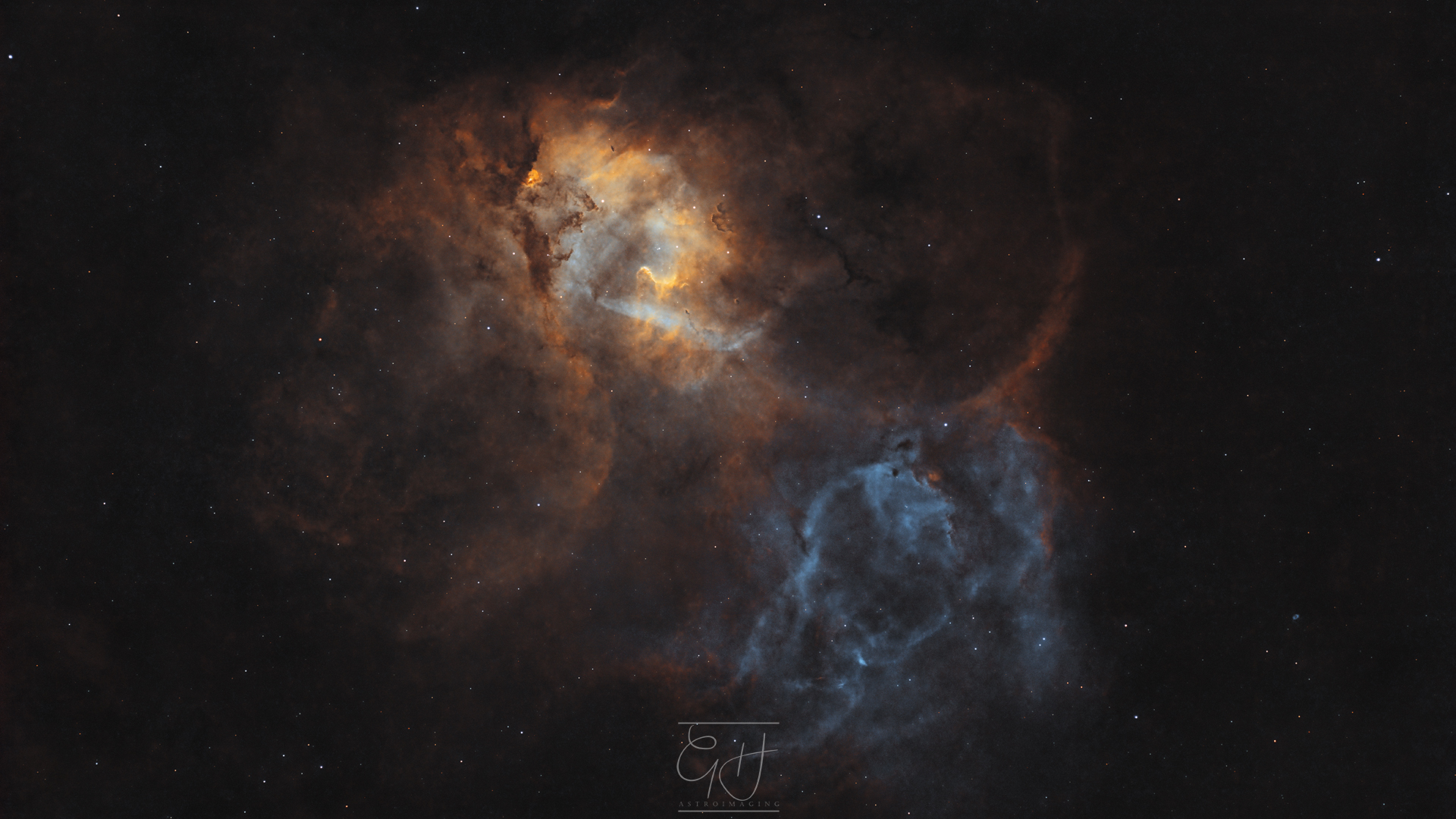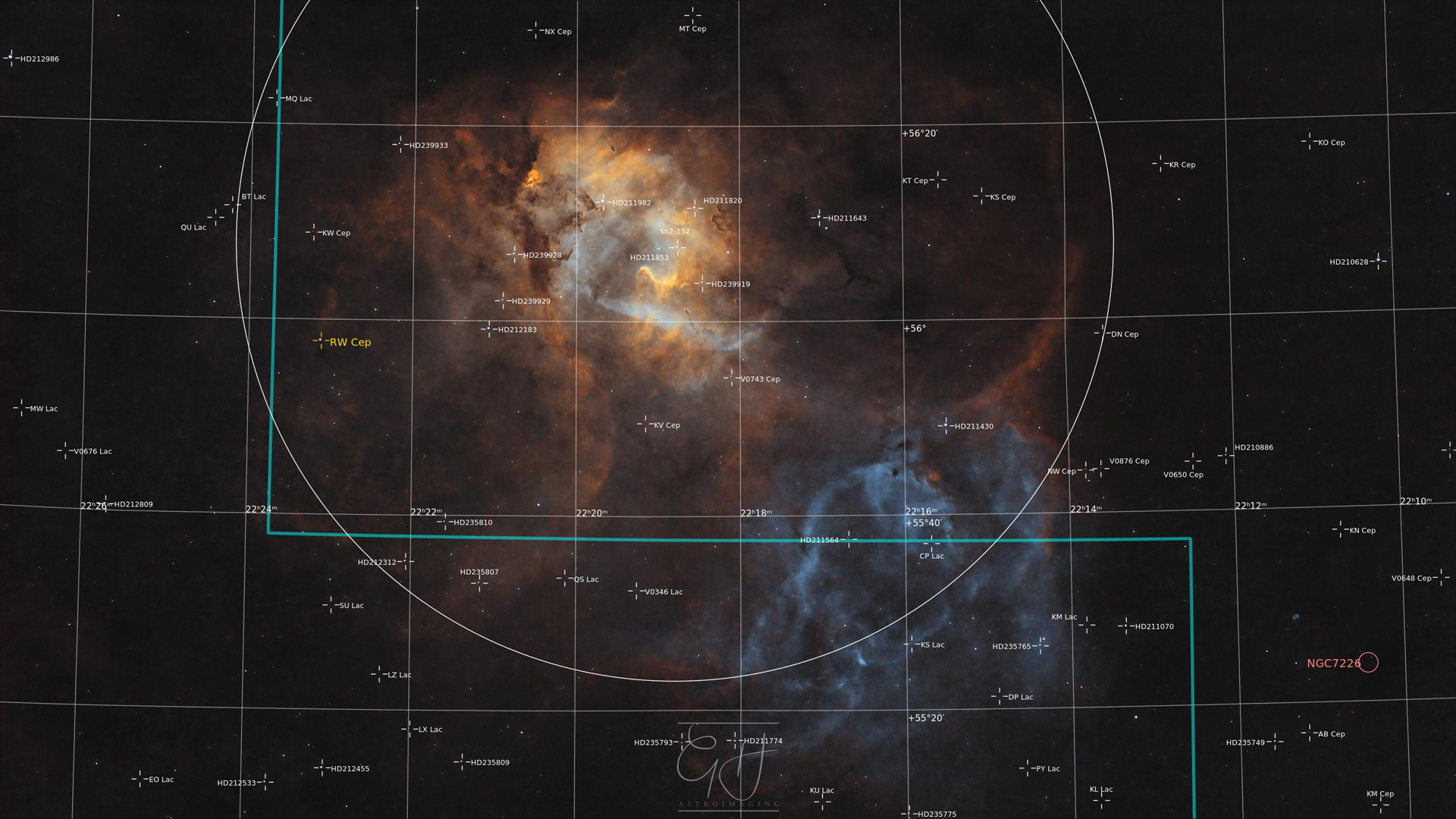The Lion Nebula, January 16, 17, 18 & 19 2023


The Lion Nebula, or to give it its official title Sh2-132, is a faint emission nebula that spans the border between the constellations of Cepheus and Lacerta. The overall size of the nebula is a little larger than a full moon.
Surprisingly, I have been unable to find a Wikipedia page for this object, so I will try to describe it as far as I am able here.
There are several interesting areas in this nebula, and it is believed to be an area of ongoing active star formation. The area is known to contain 2 Wolf-Rayet stars, which are huge, extremely hot stars with at least 20 times the mass of our sun and can be up to a million times brighter. It is these highly energetic stars that excite the gases in the nebula and cause them to emit their characteristic wavelengths that are captured in this image.
The distance to Sh2-132 is approximately 10000 - 12000 light years, but this is an estimated value as no precise measurements have been made.
Similar to my Pacman Nebula image, this one attempts to mimic the Hubble Palette with the sulphur emission mapped to the red channel, hydrogen to green and oxygen to blue. Selective colour adjustments were made to bring out the red-gold tones in the hydrogen rich areas, and enhance the blue from the oxygen emission. Accurately coloured stars have been overlaid using the data from the red, green and blue broadband filters.
You can view this image in the WorldWideTelescope by clicking here.










Sign in to enable commenting